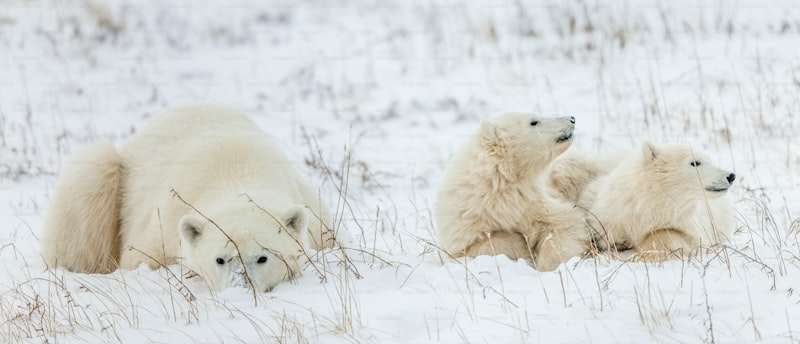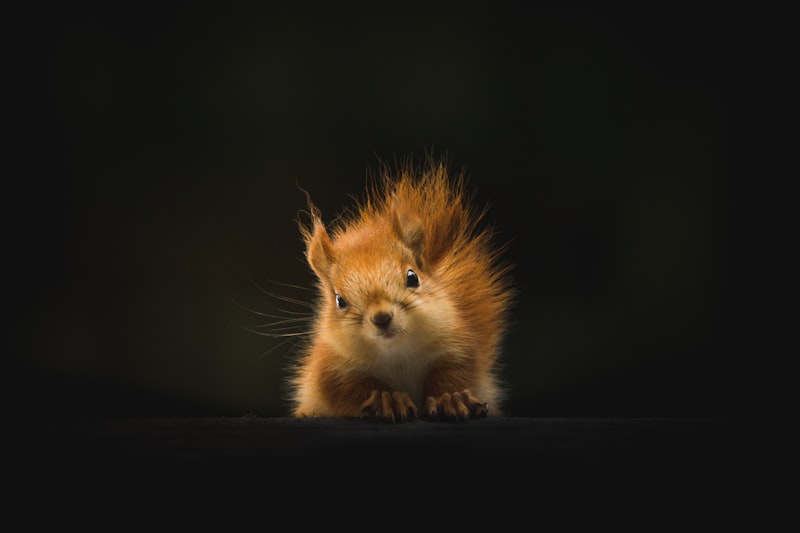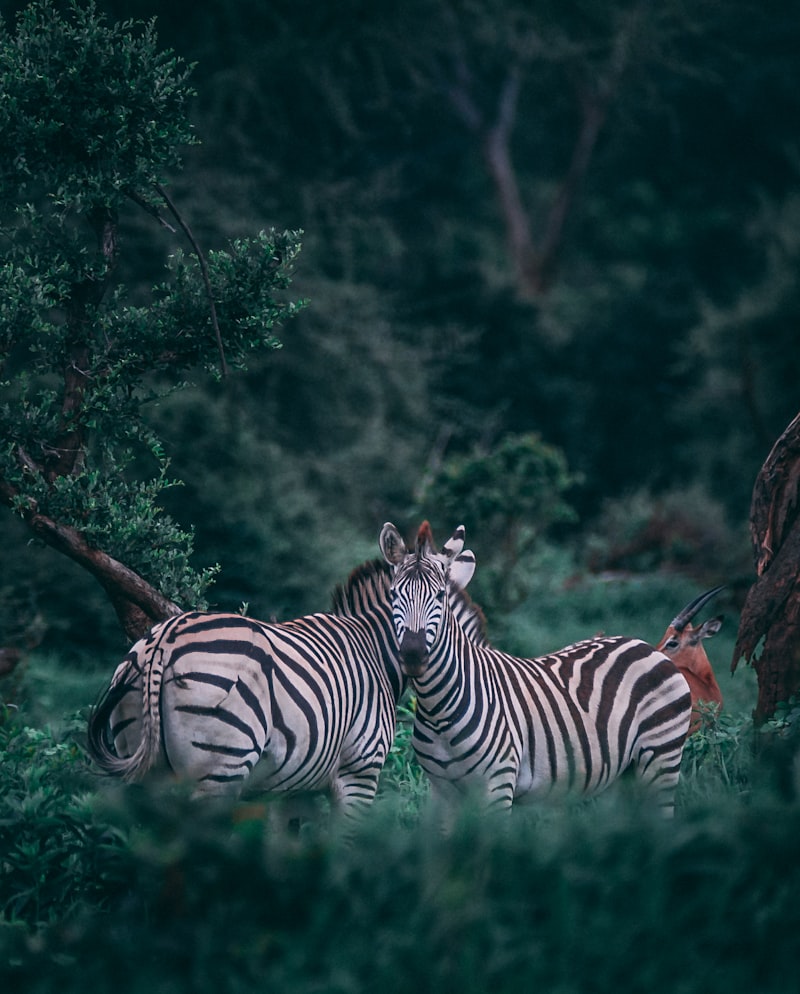The Arctic region is not just a vast expanse of ice and snow; it’s a thriving ecosystem teeming with diverse wildlife uniquely adapted to its extreme conditions. From the majestic polar bear to the elusive Arctic fox, each species plays a crucial role in this fragile ecosystem.
At the top of the food chain, the polar bear reigns supreme as the largest land carnivore on Earth. With its thick fur and layers of fat, it is perfectly suited to withstand the freezing temperatures of the Arctic. Known for its powerful swimming ability, the polar bear hunts seals primarily, relying on sea ice as a platform for hunting.
In contrast, the Arctic fox is a master of adaptation, changing its fur color with the seasons from white in winter to brown or gray in summer. This cunning predator survives on a diet of lemmings, birds, and even carrion, using its keen sense of hearing to locate prey beneath the snow. Despite its small size, the Arctic fox is resilient enough to endure the harsh Arctic winters.
Marine life also thrives in the Arctic waters, where species like the beluga whale and narwhal navigate icy seas. The beluga, often called the “canary of the sea” due to its melodic calls, is known for its pure white coloration and playful nature. Meanwhile, the narwhal stands out with its long spiral tusk, which can grow up to ten feet long and is used for communication and breaking ice.
Birds such as the Arctic tern and snowy owl migrate thousands of miles to breed in the Arctic during the brief summer months. The Arctic tern holds the record for the longest migration of any bird, traveling from its Arctic breeding grounds to Antarctica and back each year.
Exploring the diversity of Arctic wildlife reveals a delicate balance shaped by adaptation to extreme conditions. Each species contributes uniquely to the ecosystem, demonstrating nature’s resilience and adaptability in one of the harshest environments on Earth.
Arctic Wonders: A Deep Dive into the Eclectic Wildlife of the North
At the top of the food chain, the polar bear reigns supreme. Known for its powerful build and thick fur, this apex predator is perfectly suited for hunting seals across the frozen sea. Its creamy white coat not only camouflages it against the snow but also provides insulation from the frigid Arctic temperatures.
Venture inland, and you might encounter the Arctic fox, a creature as cunning as it is beautiful. Sporting a fluffy white coat in winter and a brownish-gray one in summer, this fox has adapted to the harsh environment by having thick fur that keeps it warm and acts as camouflage. It scavenges for food and even follows polar bears to feed on their leftovers.

Diving beneath the icy waters, the Arctic beluga whale glides gracefully. With its distinctive white color and melon-shaped head, it navigates the Arctic’s freezing seas with ease. These sociable creatures often travel in pods and use a diverse range of vocalizations to communicate with each other.
Among the avian wonders, the Arctic tern stands out for its incredible migration journey. This bird travels from its Arctic breeding grounds all the way to the Antarctic and back, covering a staggering distance of over 70,000 kilometers annually. With its silver-gray plumage and buoyant flight, the Arctic tern embodies resilience and adaptability in the face of challenging environmental conditions.
Each of these Arctic wonders showcases nature’s remarkable ability to thrive in even the most extreme environments. From the icy tundra to the expansive polar seas, this region continues to fascinate and inspire with its diverse wildlife and awe-inspiring adaptations. So, join us as we embark on a journey into the eclectic wildlife of the North, where every creature tells a story of survival and resilience in a land of ice and snow.
Unveiling the Secrets of Arctic Biodiversity: From Polar Bears to Narwhals
Polar Bears, icons of the Arctic, embody resilience and grace. These apex predators navigate vast ice floes, hunting seals with a prowess that speaks to their evolutionary perfection. Their thick, insulated fur and a thick layer of blubber protect them from the bone-chilling cold, ensuring survival in a habitat where temperatures plunge far below freezing.
Narwhals, often dubbed the “unicorns of the sea,” captivate with their long, spiral tusks that can reach up to ten feet in length. These tusked whales navigate the Arctic’s icy waters with unparalleled grace, their distinct tusks playing roles in communication and perhaps even aiding in sensing changes in the environment. Their ability to dive to great depths adds to their enigmatic allure, showcasing adaptation at its finest in the Arctic’s challenging waters.
Arctic biodiversity extends beyond these charismatic species. Seabirds like the resilient Arctic Terns undertake epic migrations from pole to pole, while the Arctic Foxes don a winter coat that shifts from brown to snowy white, blending seamlessly with their surroundings. The resilience and adaptation of these species underscore the intricate balance of life in one of Earth’s most extreme environments.
Yet, climate change poses an existential threat to Arctic biodiversity. As temperatures rise and ice melts at alarming rates, habitats crucial for these species are shrinking. This environmental shift challenges the very survival strategies that have evolved over millennia, urging global efforts to preserve this fragile ecosystem.
Beyond the Ice: Rare and Endangered Species Thriving in the Arctic Circle
One of the most iconic creatures found here is the polar bear, a majestic predator perfectly suited to its icy habitat. With thick fur and a layer of fat for insulation, polar bears are expert hunters, relying on their keen sense of smell to detect seals through the sea ice. These apex predators are not just symbols of the Arctic but integral to its ecological balance.
Diving beneath the frozen seas, another marvel awaits: the narwhal. Often dubbed the unicorn of the sea, narwhals possess a long spiral tusk protruding from their heads, believed to be used for communication and breaking through sea ice. These elusive whales navigate the frigid waters in small pods, their presence a testament to the Arctic’s unique marine life.
Above the surface, the Arctic fox scampers across the tundra, its thick, white fur blending seamlessly with the snow-covered landscape. This cunning predator has adapted to the cold by changing its coat color with the seasons, from white in winter to brown or gray in summer, ensuring camouflage and survival year-round.
Venturing into the skies, the snowy owl commands attention with its ghostly appearance and piercing yellow eyes. These silent hunters are well adapted to the Arctic’s long nights, relying on keen eyesight and acute hearing to locate prey such as lemmings and ptarmigans amidst the stark white surroundings.
While these species have evolved remarkable adaptations to thrive in the Arctic’s extreme conditions, they face increasing threats from climate change and human activities. Conservation efforts are crucial to preserving their habitats and ensuring future generations can continue to marvel at the diversity and resilience of life beyond the ice.
Meet the Masters of Adaptation: How Arctic Animals Survive Extreme Conditions

Take the polar bear, for instance. With its thick layer of insulating blubber and dense fur, it’s perfectly suited for Arctic life. This magnificent creature can swim for hours in freezing waters, hunt seals with precision, and withstand the bone-chilling cold that would cripple most other animals.
Then there’s the Arctic fox, a cunning predator that changes its fur color with the seasons. In winter, its coat becomes a pristine white camouflage, blending seamlessly with the snow-covered terrain. This adaptation not only helps it evade predators but also ensures successful hunts for rodents and birds hiding beneath the snow.
Arctic seals, masters of both ice and sea, have streamlined bodies and large, powerful flippers that enable them to maneuver effortlessly through icy waters. Their ability to dive deep and hold their breath for extended periods allows them to locate breathing holes and evade predators like the polar bear.
These animals’ adaptations go beyond physical attributes; they exhibit behavioral strategies that are equally awe-inspiring. Some, like the Arctic hare, maintain a low profile during the day to conserve energy and avoid detection, while others, such as the musk ox, gather in tight-knit herds to protect themselves from the biting winds.
From Tundra to Sea: Mapping the Rich Tapestry of Arctic Fauna
Polar bears, the iconic rulers of the Arctic ice, are perhaps the most emblematic of this region’s fauna. With their thick fur and impressive size, they are perfectly equipped to hunt seals and navigate the frozen expanses. These apex predators roam the sea ice, embodying strength and resilience in their quest for survival.

In contrast to the polar bear’s dominance, the Arctic fox epitomizes agility and resourcefulness. Its thick, white fur coat transforms to a summer brown, camouflaging perfectly against the tundra or rocky outcrops. These clever hunters scavenge for food and are known for their ability to endure the harshest winters with relative ease.
Beneath the icy waters, another world unfolds with a surprising diversity of marine life. From massive bowhead whales that glide gracefully through the cold currents to elusive narwhals with their legendary tusks, each species has carved out its niche in the Arctic seascape. These creatures navigate the depths, sometimes under layers of ice, showcasing a remarkable adaptation to the extreme environment.
Bird enthusiasts marvel at the Arctic’s avian residents, such as the snowy owl and the Arctic tern. The snowy owl, with its ghostly white plumage, is a formidable predator of the tundra, preying on lemmings and other small mammals. Meanwhile, the Arctic tern undertakes one of the longest migrations in the animal kingdom, traveling from pole to pole to take advantage of continuous Arctic summers.
Frequently Asked Questions
What are some iconic species of Arctic wildlife?
Discover iconic species of Arctic wildlife, including polar bears, Arctic foxes, walruses, and beluga whales. Learn about these unique animals’ adaptations to survive in extreme cold climates.
Why is biodiversity important in Arctic ecosystems?
Biodiversity in Arctic ecosystems is crucial for maintaining ecological balance, supporting unique species adapted to extreme conditions, and preserving genetic diversity. It contributes to ecosystem resilience against environmental changes and provides valuable resources for indigenous communities dependent on Arctic biodiversity.
What conservation challenges do Arctic wildlife face?
Discover the conservation challenges faced by Arctic wildlife, exploring issues such as climate change impacts, habitat loss, and human disturbances.
How are Arctic animals adapted to their environment?
Discover how Arctic animals have adapted uniquely to survive in their harsh environment. Learn about their specialized features like thick fur, insulating blubber, and compact bodies that help them conserve heat. Explore their behavioral adaptations such as migration and hibernation strategies that ensure their survival in extreme cold.
How do Arctic animals survive in extreme cold?
Discover how Arctic animals survive in extreme cold climates with adaptations such as thick fur, layers of fat for insulation, and specialized metabolic processes that conserve energy and maintain body heat.


